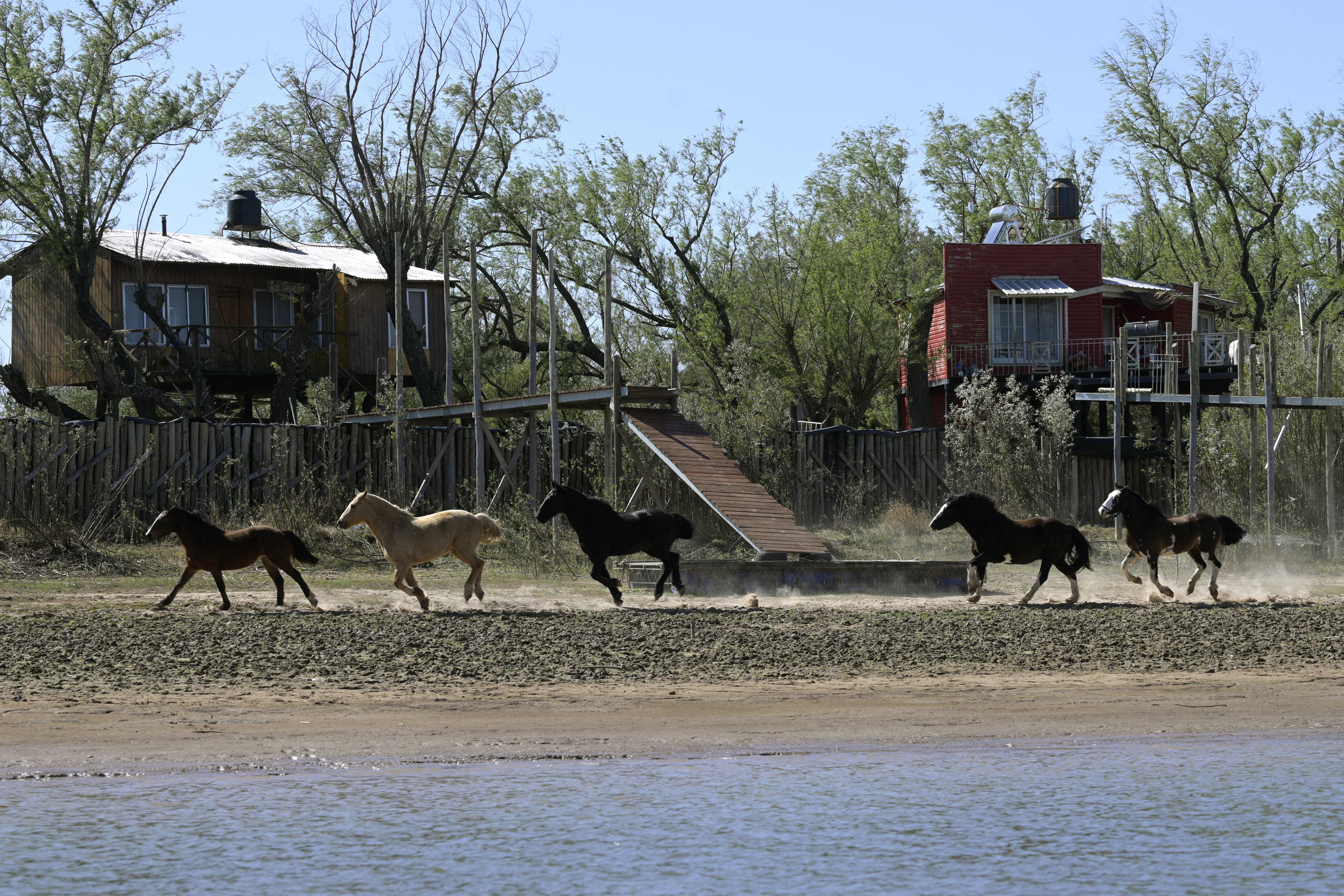Animals evolved ability to gallop even before they emerged on land, study suggests
Many modern day animals may have lost the ability their ancestors possessed, say scientists

Your support helps us to tell the story
From reproductive rights to climate change to Big Tech, The Independent is on the ground when the story is developing. Whether it's investigating the financials of Elon Musk's pro-Trump PAC or producing our latest documentary, 'The A Word', which shines a light on the American women fighting for reproductive rights, we know how important it is to parse out the facts from the messaging.
At such a critical moment in US history, we need reporters on the ground. Your donation allows us to keep sending journalists to speak to both sides of the story.
The Independent is trusted by Americans across the entire political spectrum. And unlike many other quality news outlets, we choose not to lock Americans out of our reporting and analysis with paywalls. We believe quality journalism should be available to everyone, paid for by those who can afford it.
Your support makes all the difference.Animals may have learned to bound and gallop about 472 million years ago, before large complex life forms emerged onto land, revealed a new study.
Galloping, as seen in modern day horses, is a type of “asymmetric gait”, in which the timing of footfalls is unevenly spread.
Similar asymmetric gaits include bounds performed by rabbits, crutching and punting.
Crutching is when amphibious fish such as mudskippers drag themselves by their fins across land, while punting is a movement in which fish push themselves along the sea or riverbed using their pelvic fins.
While it is widely thought that the ability to bound and gallop only emerged after mammals first appeared on the planet about 210 million years ago, scientists, including Eric McElroy from the College of Charleston in the US, pointed out that some reptiles also exhibited this trait.
Studies have shown that crocodiles can gallop at their highest speeds and that turtles can also bound.
In the new study published on Tuesday in The Journal of Experimental Biology, scientists constructed a family tree from 308 animal species – including mammals, marsupials, monotremes, reptiles, frogs, toads and fish – that are currently known to use “asymmetric footfalls” when propelling themselves along surfaces with their feet and fins.
They allocated a score of ‘0’ to species that only used evenly timed walks, trots and runs and a score of ‘1’ to species that showed any sign of moving asymmetrically by bounding, crutching, punting or galloping.
The researchers then ran a series of simulations to find out how likely it was that asymmetric gaits appeared earlier or later in the evolutionary tree.
Based on their analysis, scientists said the earliest ancestors of almost all modern animals, including fish, were “most likely” capable of moving with some kind of proto-asymmetric gait 472 million years ago.
While it is unclear from the study whether these ancestor species were exactly punting, crutching or bounding along the seabed, researchers said these animals were capable of asymmetrically coordinating their limbs to propel themselves.
“Our analysis shows strongest support for an evolutionary model where asymmetrical gaits are ancestral for gnathostomes [jawed vertebrates] during benthic walking [deep sea walking] and could be both lost and gained during subsequent gnathostome evolution,” scientists wrote in the study.
Even though many animal ancestors may have been capable of this alternate form of propulsion, they said some creatures – such as lizards, salamanders, frogs and even elephants – have lost the ability to bound and gallop.
Researchers said this may either be because they lost the nerves necessary for coordinating these manoeuvres or because these animals became too large or too slow to be airborne.
Citing a limitation of the study, scientists said none of the modern-day animal species assessed in the study “truly represents the ancestral state for gnathostomes at the water–land transition”, adding that some ancient ancestor species to these animals may have had very different body parts functions compared to these present-day creatures.
However, they also pointed out that the limb coordination patterns enabling asymmetrical gaits were an ancient pattern of muscles and nerves that may have been present by the time the gnathostome group originated.
Scientists thus said it may be likely humans inherited the ability from an ancient fish-like ancestor that propelled itself along the seabed on its fins long before any species set foot – or fin – on dry land.
Join our commenting forum
Join thought-provoking conversations, follow other Independent readers and see their replies
Comments